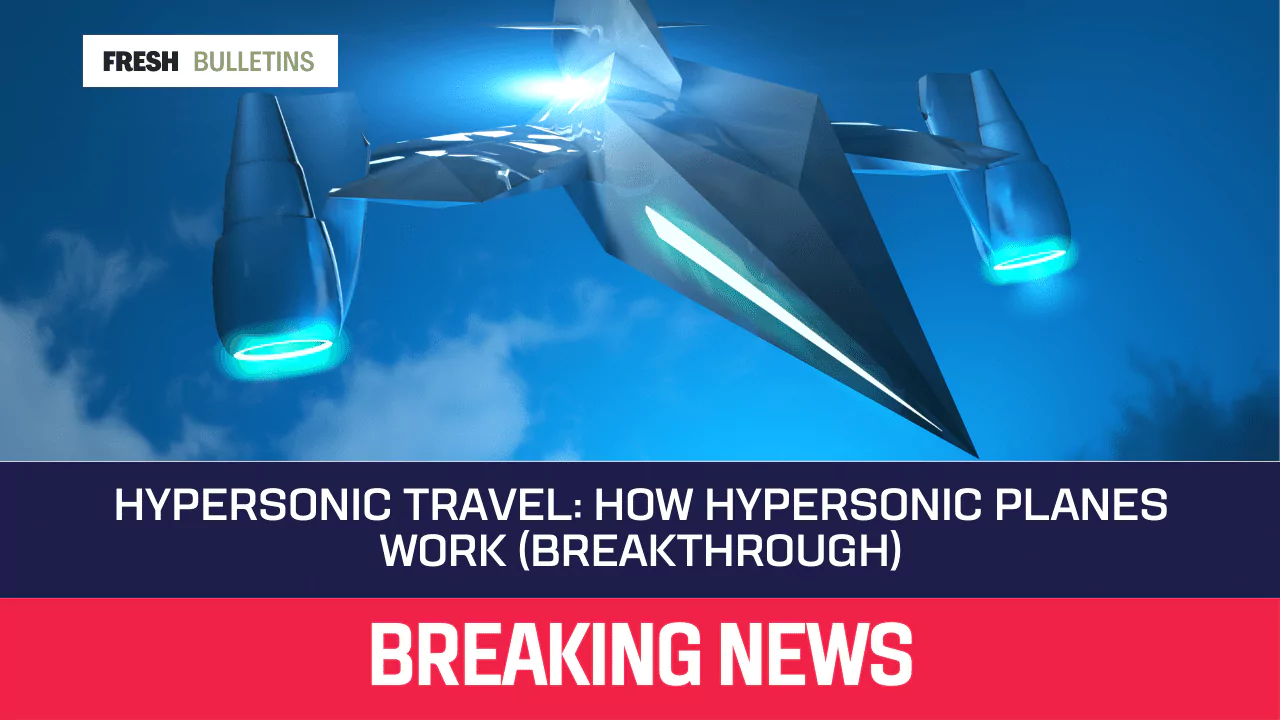Hypersonic Travel: How Hypersonic Planes Work (Breakthrough)
Hypersonic travel involves flying at speeds greater than five times the speed of sound, or Mach 5. This remarkable technology promises to revolutionize air travel by drastically reducing flight times and opening up new possibilities for both civilian and military applications.
Hypersonic planes, powered by advanced propulsion systems like scramjets, represent a significant breakthrough in aviation technology.
This advancement, pioneered by aerospace engineers at the University of Central Florida (UCF), holds the promise of enabling air travel at speeds up to 14 times faster than the speed of sound, reaching up to 13,000 miles per hour.
UCF’s Breakthrough in Hypersonic Propulsion
Successful Experiments in Hypersonic Propulsion
The University of Central Florida (UCF) has made significant strides in hypersonic propulsion. Their researchers successfully conducted experiments demonstrating new propulsion technologies capable of sustaining hypersonic speeds. These experiments showed that hypersonic planes could achieve and maintain incredibly high speeds for extended periods, making the concept of hypersonic travel more feasible than ever before.
Potential for Air Travel Up to 14 Times Faster (Up to 13,000 Miles per Hour)
The breakthrough achieved by UCF indicates that hypersonic planes might travel up to 14 times faster than current commercial jets, reaching speeds of up to 13,000 miles per hour. This means that a trip from New York to London, which typically takes around seven hours, could be completed in just about 30 minutes. The potential impact on global travel and connectivity is immense, offering faster and more efficient routes for passengers and cargo alike.
Advancements in Hypersonic Technology
Scramjet Technology
Key to this breakthrough is the utilization of scramjet technology, a type of air-breathing engine designed to operate efficiently at high speeds. Scramjets offer improved flexibility and cost-effectiveness, making them an attractive prospect for the development of hypersonic aircraft. This advancement in technology provides the necessary propulsion for sustained hypersonic flight, overcoming the limitations of traditional jet propulsion systems.
Improved Flexibility and Cost-Effectiveness
Advancements in hypersonic technology have also led to increased flexibility and cost-effectiveness. Modern materials and manufacturing techniques allow for the creation of more durable and lightweight components. This reduces the overall cost of building and maintaining hypersonic planes. Furthermore, innovations in fuel efficiency and engine design contribute to lower operational costs, making hypersonic travel more economically viable.
Increased Speed Capabilities
With ongoing research and development, the speed capabilities of hypersonic planes continue to improve. Engineers and scientists are pushing the boundaries of what is possible, aiming for even faster and more efficient travel. The goal is to create aircraft that can travel at speeds beyond Mach 10, further reducing travel times and expanding the range of possible destinations.
Hypersonics in Action
Hypersonic Weapons
Hypersonic technology has already been employed in the development of hypersonic weapons, demonstrating its potential for military applications. The unmatched speed and maneuverability of hypersonic vehicles have sparked interest in defense applications, presenting new possibilities for the future of military aviation and strategic deterrence.
Potential for Faster and More Efficient Travel
Beyond military applications, the breakthrough in hypersonic propulsion opens up possibilities for faster and more efficient commercial air travel. The ability to traverse vast distances in a fraction of the time of conventional aircraft holds significant promise for the future of global transportation, potentially reshaping international travel and commerce.
Future Possibilities and Challenges
Research and Development
The ongoing research and development in hypersonic technology are essential for further advancements in the field. Continued innovation and collaboration among aerospace engineers and scientists are crucial in harnessing the full potential of hypersonic propulsion, paving the way for practical applications in both civilian and military domains.
Advancements in Heat Shield Technology
One of the key challenges in hypersonic travel lies in managing the intense heat generated during high-speed flight. Advancements in heat shield technology are pivotal in ensuring the safety and viability of hypersonic aircraft, enabling them to withstand the extreme temperatures encountered during hypersonic flight.
Implications for Air Travel and Defense Purposes
The successful development of hypersonic technology carries far-reaching implications for both air travel and defense purposes. The transformational impact of hypersonic travel could herald a new era of ultra-fast, global air transportation, while also influencing the strategic dynamics of military power and deterrence on a global scale.
In conclusion, the recent breakthrough in hypersonic propulsion, spearheaded by UCF’s aerospace engineers, has ushered in a new frontier in aviation. The potential for safe and stable hypersonic air travel, coupled with advancements in technology and ongoing research efforts, underscores the promising future of hypersonic travel. As the pursuit of hypersonic flight continues to evolve, it holds the potential to redefine the boundaries of both civilian and military aviation, offering unprecedented speed, efficiency, and strategic capabilities.








